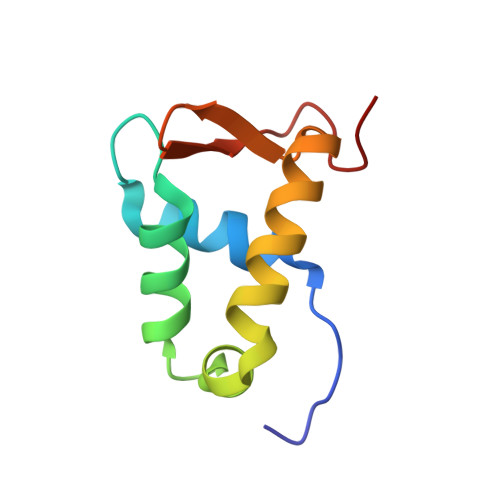MORF and MOZ acetyltransferases target unmethylated CpG islands through the winged helix domain.
Becht, D.C., Klein, B.J., Kanai, A., Jang, S.M., Cox, K.L., Zhou, B.R., Phanor, S.K., Zhang, Y., Chen, R.W., Ebmeier, C.C., Lachance, C., Galloy, M., Fradet-Turcotte, A., Bulyk, M.L., Bai, Y., Poirier, M.G., Cote, J., Yokoyama, A., Kutateladze, T.G.(2023) Nat Commun 14: 697-697
- PubMed: 36754959
- DOI: https://doi.org/10.1038/s41467-023-36368-5
- Primary Citation of Related Structures:
8E4V - PubMed Abstract:
Human acetyltransferases MOZ and MORF are implicated in chromosomal translocations associated with aggressive leukemias. Oncogenic translocations involve the far amino terminus of MOZ/MORF, the function of which remains unclear. Here, we identified and characterized two structured winged helix (WH) domains, WH1 and WH2, in MORF and MOZ. WHs bind DNA in a cooperative manner, with WH1 specifically recognizing unmethylated CpG sequences. Structural and genomic analyses show that the DNA binding function of WHs targets MORF/MOZ to gene promoters, stimulating transcription and H3K23 acetylation, and WH1 recruits oncogenic fusions to HOXA genes that trigger leukemogenesis. Cryo-EM, NMR, mass spectrometry and mutagenesis studies provide mechanistic insight into the DNA-binding mechanism, which includes the association of WH1 with the CpG-containing linker DNA and binding of WH2 to the dyad of the nucleosome. The discovery of WHs in MORF and MOZ and their DNA binding functions could open an avenue in developing therapeutics to treat diseases associated with aberrant MOZ/MORF acetyltransferase activities.
Organizational Affiliation:
Department of Pharmacology, University of Colorado School of Medicine, Aurora, CO, 80045, USA.














